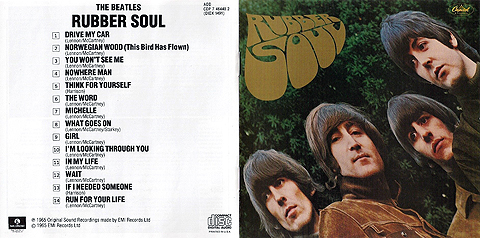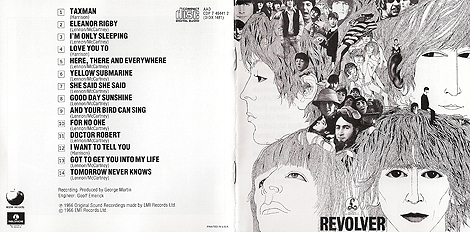A Musical Transition
by Andrew Boyd
Today, a great music group changes. The University of Houston's College of Engineering presents this series about the machines that make our civilization run, and the people whose ingenuity created them.
In 2003, Rolling Stone magazine published a list of the five-hundred greatest record albums of all time. It's controversial, of course, but — not entirely. The group with the most albums? Drum roll. The Beatles, with eleven in all and a remarkable three in the top five. Pretty amazing when you think of the competition — Bob Dylan, Elvis Presley, The Rolling Stones…
But what's most amazing is that the three top five albums are from a period of transition. Stylistically, they're worlds apart. Yet they were done in a sequence over a period of just three years.
The Beatles' earliest songs were toe tapping ditties.
[Audio: A Hard Day's Night]

But by their sixth album, Rubber Soul, a new style was emerging. The Beatles had all the fame they could hope for. Now they wanted to express themselves in new and creative ways — with novel melodies, lyrics, and technology.
Rubber Soul went beyond the simple "boy meets girl" songs that dominated the Beatles early years. We still encounter more traditional songs like Michelle and Girl, but we also hear a break from tradition in Nowhere Man and Norwegian Wood, which used the then-unheard-of sitar.
[Audio: Norwegian Wood]

As the group continued their experimentation, they pushed the limits of studio engineering. "Flanging," a technique for creating fuller-sounding music, was invented for the Beatles next album, Revolver. Musically, Revolver spanned the spectrum from doleful to frivolous — from Eleanor Rigby to Yellow Submarine. It concluded with an experimental pop music breakthrough, Tomorrow Never Knows— a song filled with technological leaps.
[Audio: Tomorrow Never Knows]

The Beatles' musical transition culminated in the 1967 release of Sgt. Pepper's Lonely Hearts Club Band — a work that's simultaneously inspired, ground breaking, and just plain strange. From the psychedelic Lucy in the Sky With Diamonds to the unforgettable A Day in the Life, all signs of the traveling mop-topped teenagers have disappeared. In their place are studio musicians — singing, playing, and engineering their way into the future. It was a remarkable transition. But it's even more remarkable the Beatles were so incredibly successful with such distinctly different styles.
[Audio: Sgt. Pepper's Lonely Hearts Club Band]
I'm Andy Boyd at the University of Houston, where we're interested in the way inventive minds work.
M. Lewisohn. The Complete Beatles Recording Sessions: The Official Story of the Abbey Road Years 1962-1970. London: Hamlyn, a Division of the Octopus Publishing Group, 1988.
Picture of the cover of the Sgt. Pepper album is taken from the Wikipedia web site: https://en.wikipedia.org/wiki/Sgt._Pepper%27s_Lonely_Hearts_Club_Band.Pictures of the other album covers taken by E. A. Boyd.
Special thanks to Ed Mayberry for suggesting the topic, and for providing reading and audio materials.